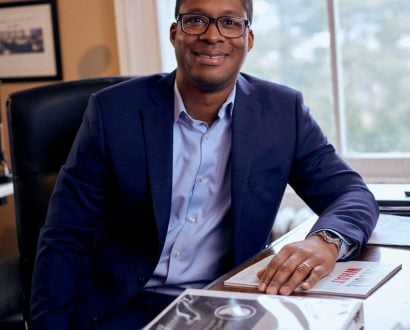The business world has seen significant progress in building more inclusive workplaces – workplaces that welcome and embrace diversity – whether that is diversity in ethnicity, gender or other marginalised groups such as people with disabilities.
In fact, leaders appear to be giving more attention to the idea of building inclusive workplaces than ever before, understanding the power of innovative and diverse thinking and what it can deliver to the bottom line. The Boston Consulting Group conducted a study that observed more than 1700 companies and found that companies with more diverse management teams saw up to 19 per cent higher margins in revenue.
This begs the question: are we living in a time when inclusive workplace culture is becoming the status quo?
Unfortunately, not just yet. There is still plenty of work to do.
According to the Australian census (2016), there was a 5 per cent drop in disabled employment with some 100,000 less full-time workers with disabilities. Globally, the unemployment rate for this segment is twice that of their counterparts. Even with progress, people with disabilities are not winning the fight for more inclusive employment – instead they appear to be going backwards.
And this isn’t just in the hiring process. People with disabilities who are employed find it hard to push through to leadership positions. Less than 7 per cent of board-level executives relate to having a disability of any kind. Yet, leaders with disability can bring natural problem-solving and collaboration skills to an organisation. Having someone with those skills at the helm helps drive productivity, engagement and happiness of all team members, regardless of background.
An example that illustrates this is Matthew Levy – a 31-year-old Paralympian born with Cerebral Palsy. Australia knows him well for his incredible talent in swimming, bringing home Gold at the 2008 Beijing Olympics. But Matthew Levy is also a corporate winner, all because one company took a chance on him in a way that most don’t when faced with people with disabilities. Welcomed into the sector through a specialist Paralympic employment program, he initially worked as a Change Analyst at Westpac before being promoted to his current position as a Business Implementation Manager.
Matthew was given this opportunity because of his Paralympic background – others are not so lucky. It also meant that executives at Westpac had to be willing to invest in his leadership future. However, 56 per cent of global leaders don’t see disability on their leadership agenda. This means employees with disabilities often don’t have the same chances for promotion. Even then, it took Matthew nearly seven years to advance in his career from the one position.
So, what can we do to level the playing field for all?
If you already hire inclusively and want to keep building a sustainable inclusive workplace culture, here are three things you can do:
-
Encourage and promote an inclusive culture.
Drive an inclusive workplace culture that enables all employees to see and value the contributions of those with disabilities. Disability sensitivity will encourage all staff to work collaboratively with one another. This also means that the innovation efforts and unique perspectives introduced into the business are recognised and this will allow an easier pathway to promotion for employees with disabilities.
-
Invest in leadership development.
Include people with disabilities in a leadership program that aims to develop their skills with future leadership opportunities in mind. KPMG is a great example of a company that is doing this well.
Their leadership program connects employees with disabilities to senior members of the organisation that can provide advice and mentorship, and also gives them opportunities to attend workshops and panels to develop their leadership presence and skills. Understand and accept that unconscious biases can sometimes play a part in promoting or training employees and work to avoid this.
-
Recognise and acknowledge their contributions.
Sometimes, it’s as simple as a word of encouragement or a nod of acknowledgement. People with disabilities do bring a unique perspective to problem solving, often offering up invaluable insight to business efforts. As leaders, appreciate these efforts and show that you recognise them. Give them space to contribute and for others to see that. Make them present and seen. This will also give those who have been ignored in the past the courage to flourish.
As we look to change the world in the face of gender equality and supporting female leaders, or ethnicity and including leaders of colour, we must also look at empowering disabled leaders. It is time for leaders to step up and put disability on their inclusivity agenda. Support the people who need it and allow those that deserve it to rise into positions that celebrate their achievements. Ultimately, a leader with disabilities will bring a perspective to business that reaps economic benefits while giving other members of minority groups a role model to relate to.







